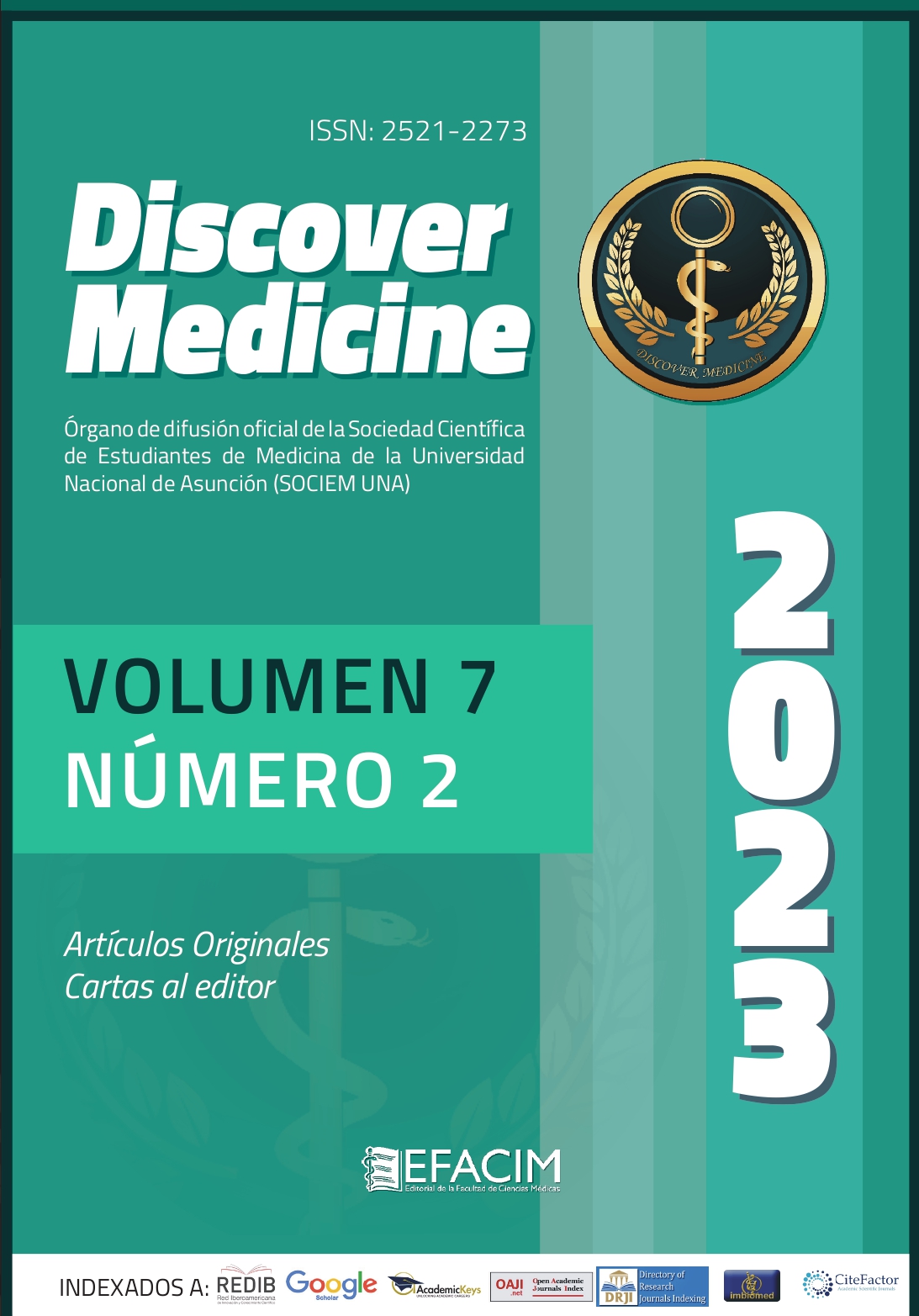Abstract
Background: This study focuses on the analysis of Bronchial Obstructive Syndrome (BOS) in children hospitalised in 2019 at the Hospital de Clínicas. Specific data reveal a significant incidence of paediatric BBS, pointing to the need to understand its epidemiological, clinical and therapeutic aspects.
Objective: To determine the approach to obstructive bronchial syndrome in paediatric patients hospitalised at the Hospital de Clínicas in 2019.
Materials and Methods: A retrospective observational design was used. The sample included paediatric patients with a diagnosis of OBS in 2019, data collected from March to May 2023. Inclusion/exclusion criteria were rigorously applied. Measurement instruments such as patient charts were used to collect detailed data.
Results: The results revealed a prominent prevalence in children under 2 years of age (80.5%), with prominent respiratory symptoms (51.3% respiratory distress). The association with underlying pathologies was notable (46.2%). Common treatment included oxygen therapy (76.9%) and salbutamol (97.4%).
Conclusion: This detailed analysis underlines patterns consistent with the literature, highlighting the need for specific preventive strategies for children under 2 years of age. Furthermore, it highlights the importance of individualising the management of paediatric OBS, taking into account underlying pathologies and variability in clinical presentation.
References
Ibatova SM, Ergashev AK, Ibragimova YB. BRONCHO-OBSTRUCTIVE SYNDROME IN CHILDREN. Евразийский Журнал Медицинских И Естественных Наук. 10 de junio de 2023;3(6):151-6.
Kudratova Z. Pathogenetic features of bronch-obstructive syndrome in children. Результаты Научных Исследований В Условиях Пандемии COVID-19. 2020;1(05):24-7.
Matsyura O, Besh L, Zubchenko S, Zaremba N, Slaba O. ANALYSIS OF CAUSATIVE FACTORS OF RECURRENT BRONCHIAL OBSTRUCTION SYNDROME IN YOUNG CHILDREN. Georgian Med News. 1 de noviembre de 2021;(320):59-64.
Oksana M, Lesya B, Svitlana Z, Taras G, Natalia L, Khrystyna SK, et al. Assessment of efficacy of secondary prophylactic complex of bronchial obstruction syndrome in young children with respiratory disorders in neonatal period: analysis of symptoms and serological markers. AIMS Allergy Immunol. 2022;6(2):25-41.
Salova AL, Chelnokova OG, Mozzhukhina LI, Kogut TA. Bronchial obstructive syndrome in primary infection with Mycobacterium tuberculosis in children. Child Infect. 14 de diciembre de 2020;19(4):34-7.
Singh P, Khan S, Sherbaevna S, Ahmed S, Navarrete F, Khan A, et al. Differential Diagnosis of Bronchial Obstructive Syndrome. Int J Clin Ski. 1 de enero de 2023;17:31-040.
Allanazarov AB. CLINICAL AND IMMUNOLOGICAL FEATURES OF BRONCHOOSTRUCTIVE SYNDROME IN CHILDREN OF EARLY AND PRESCHOOL AGE. Gold BRAIN. 17 de mayo de 2023;1(13):58-66.
Gulotta G, Iannella G, Vicini C, Polimeni A, Greco A, de Vincentiis M, et al. Risk Factors for Obstructive Sleep Apnea Syndrome in Children: State of the Art. Int J Environ Res Public Health. enero de 2019;16(18):3235.
Luana N, Marco Z, Francesca DB, Giorgio P, Giulia R, Silvia S, et al. Age and Upper Airway Obstruction: A Challenge to the Clinical Approach in Pediatric Patients. Int J Environ Res Public Health. enero de 2020;17(10):3531.
Khamidovna NK. BRONCHO –OBSTRUCTIVE SYNDROME IN THE PRACTICE OF A THERAPIST. Sci APPROACH Mod Educ Syst. 10 de octubre de 2023;2(18):192-4.
Aromaa M, Lilja-Maula L, Rajamäki MM. Assessment of welfare and brachycephalic obstructive airway syndrome signs in young, breeding age French Bulldogs and Pugs, using owner questionnaire, physical examination and walk tests. Anim Welf. agosto de 2019;28(3):287-98.
Passi M, Shahid S, Chockalingam S, Sundar IK, Packirisamy G. Conventional and Nanotechnology Based Approaches to Combat Chronic Obstructive Pulmonary Disease: Implications for Chronic Airway Diseases. Int J Nanomedicine. 28 de mayo de 2020;15:3803-26.
Wheeldon A. The respiratory system and associated disorders. Br J Nurs. 6 de julio de 2023;32(13):613-9.
Werner H, Lopes J, Ribeiro G, Lapa DA, Acácio GL, Leite FSF, et al. Congenital High Airway Obstruction Syndrome (CHAOS): Virtual Navigation in the Fetal Airways After Intrauterine Endoscopic Treatment. J Obstet Gynaecol Can. 1 de julio de 2021;43(7):879-83.
Nolan HR, Gurria J, Peiro JL, Tabbah S, Diaz-Primera R, Polzin W, et al. Congenital high airway obstruction syndrome (CHAOS): Natural history, prenatal management strategies, and outcomes at a single comprehensive fetal center. J Pediatr Surg. 1 de junio de 2019;54(6):1153-8.
Masa JF, Mokhlesi B, Benítez I, Caro FJG de T, Sánchez-Quiroga MÁ, Romero A, et al. Cost-effectiveness of positive airway pressure modalities in obesity hypoventilation syndrome with severe obstructive sleep apnoea. Thorax. 1 de junio de 2020;75(6):459-67.

This work is licensed under a Creative Commons Attribution-NonCommercial-NoDerivatives 4.0 International License.
Copyright (c) 2023 Deisy Beatriz, Shirley Rocío, Cielos Jemima, Alba María
